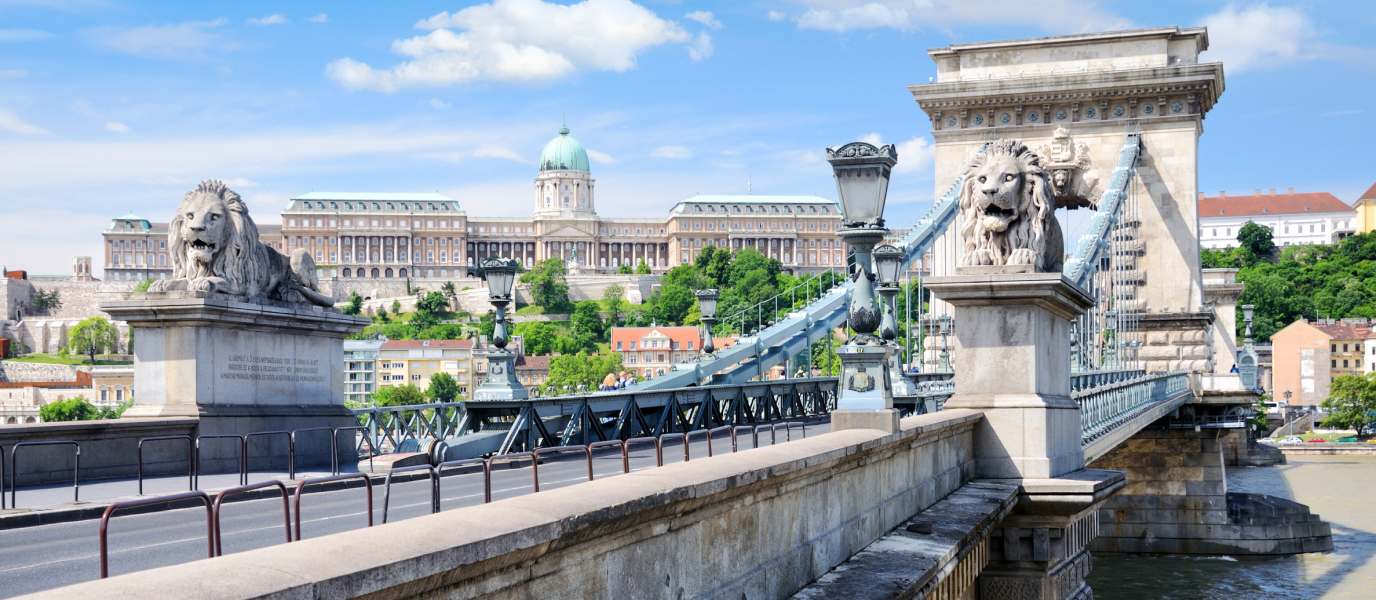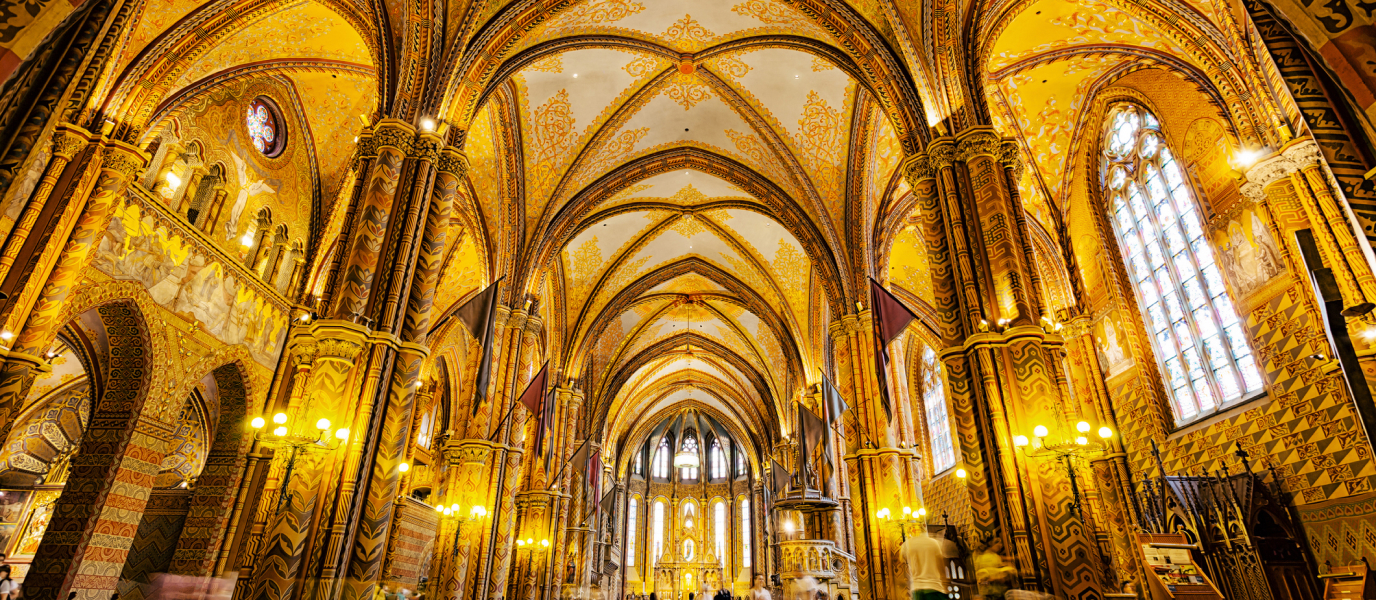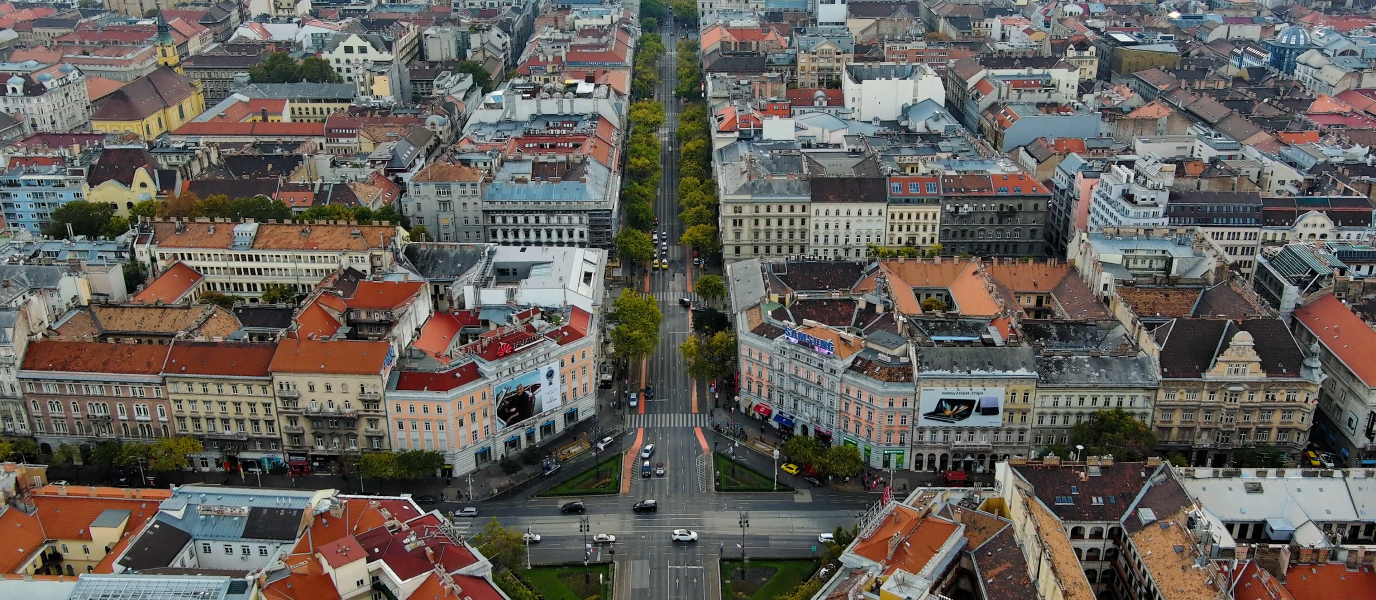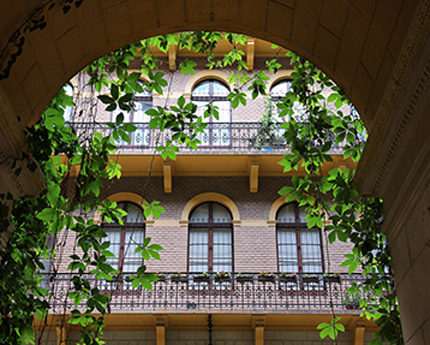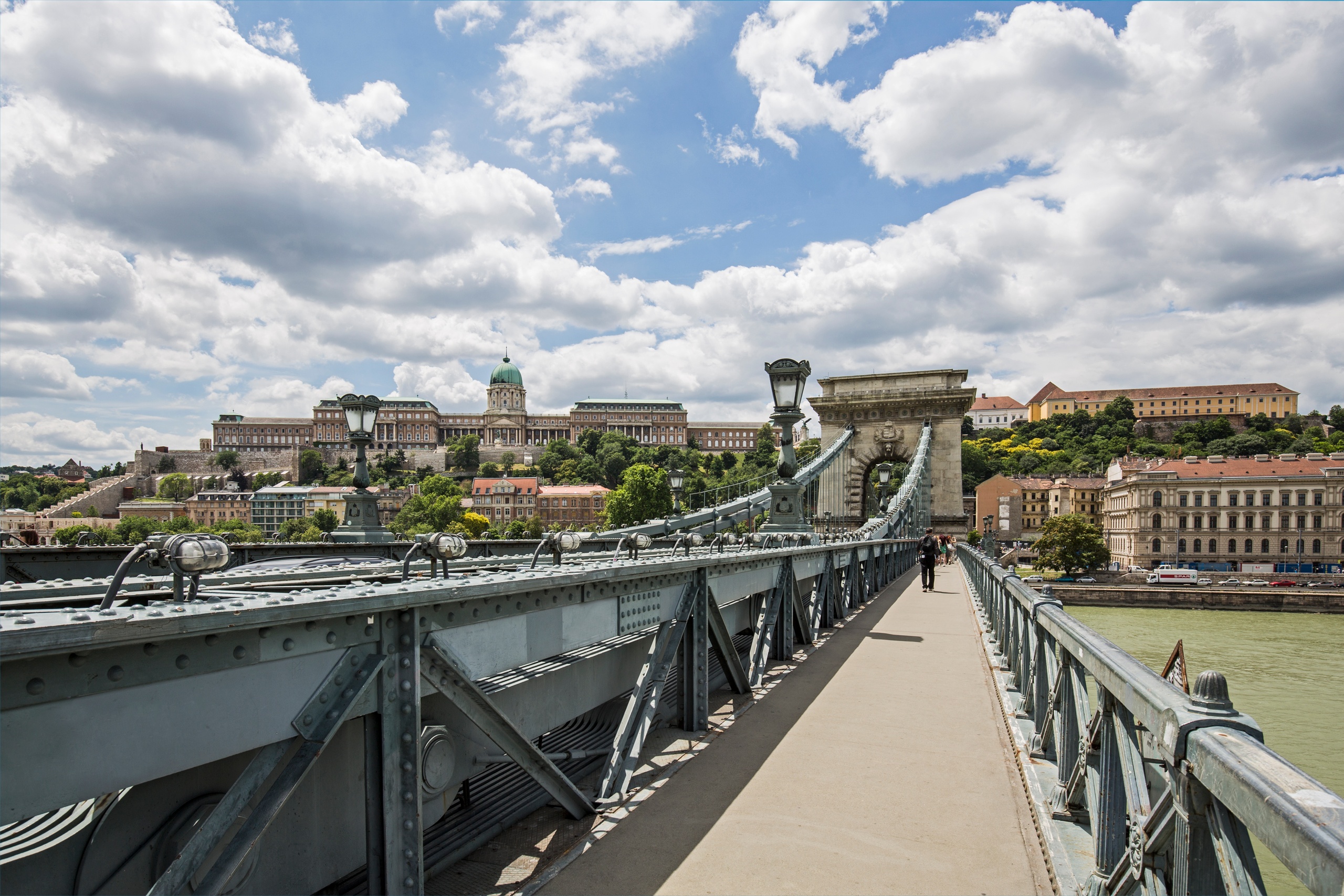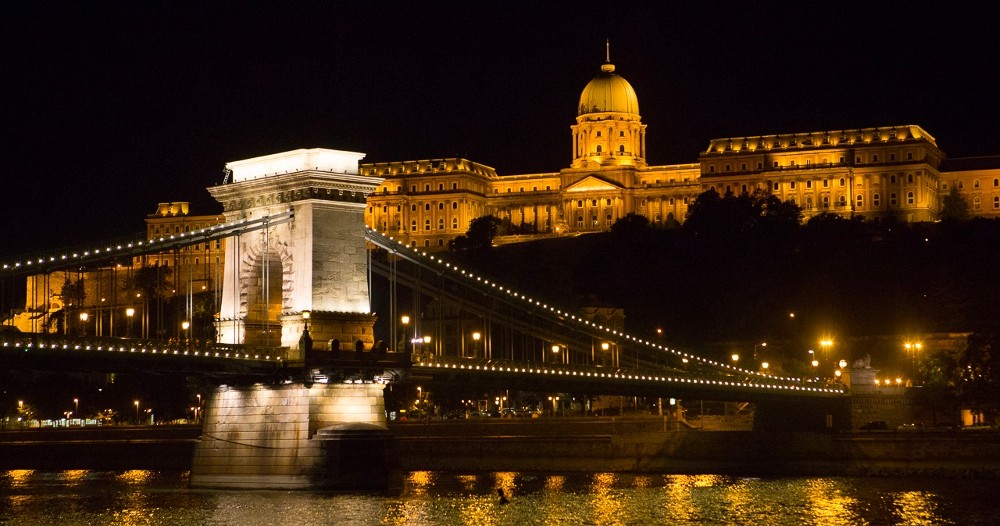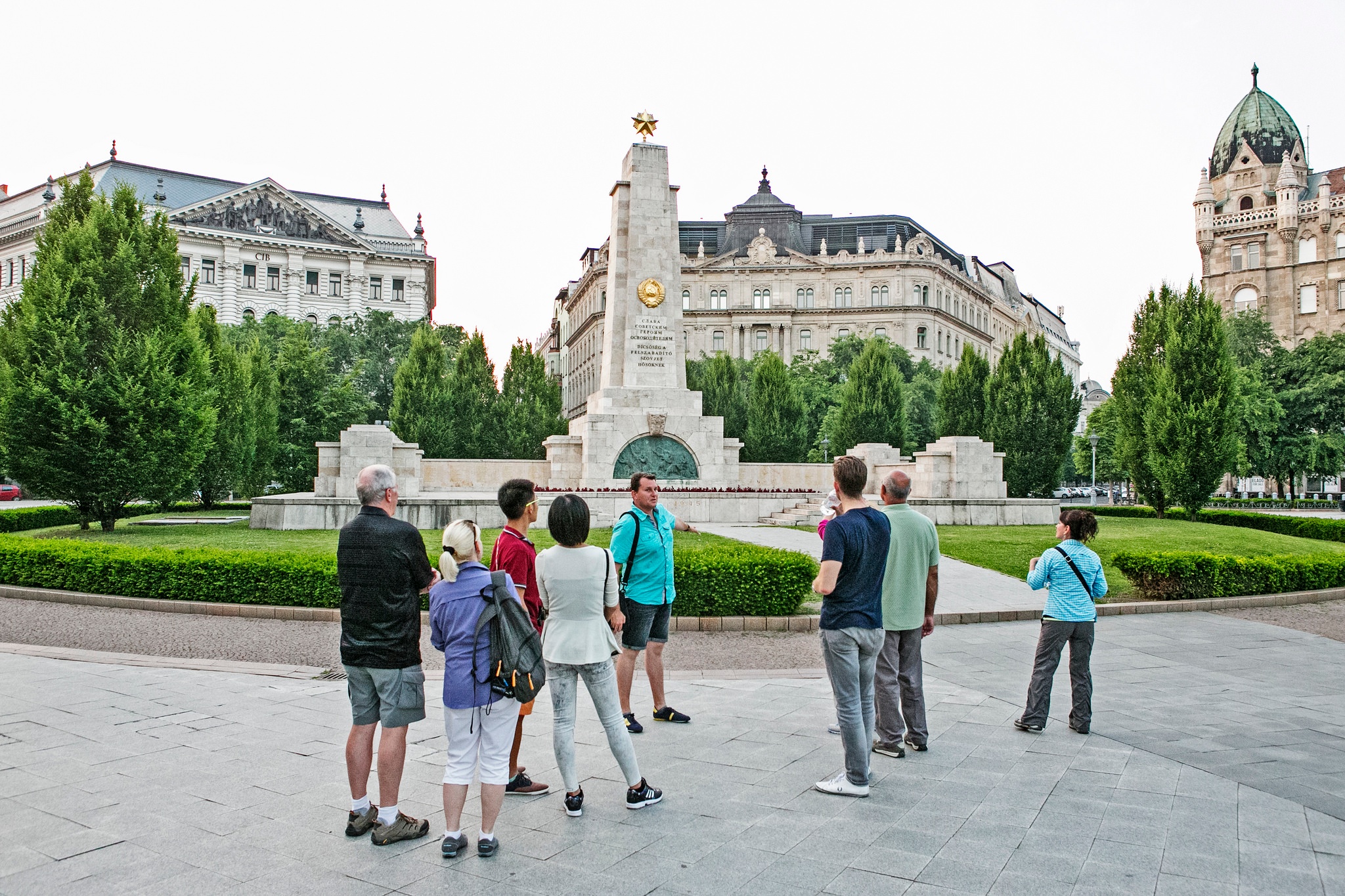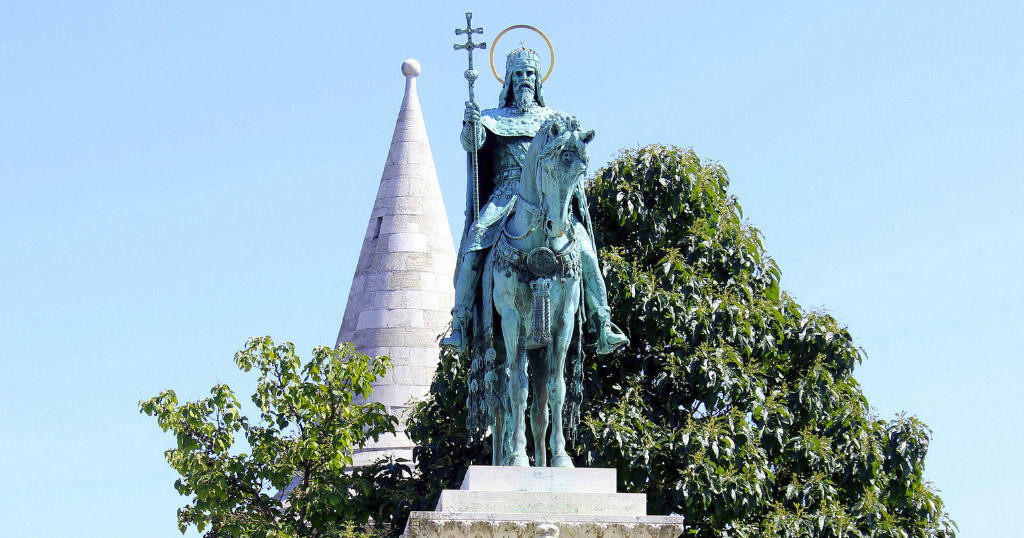One of the symbols of Budapest is the famous Chain Bridge, the historical iron and stone viaduct that crosses the Danube river joining two halves of the city, Buda and Pest. Join us as we explore the bridge’s history and interesting facts.
Owing to its location, the bridge has become a symbol of the city. Each end leads to the heart of the two cities. On the Buda side, the castle and the hill, with the funicular that climbs up the hillside. On the Pest side, the Belváros quarter, the elegant city centre.
Beyond its symbolism and the skyline that it forms above the river, the Chain Bridge has been key to the evolution of Budapest. Read on to find out more about its history, some interesting facts about its structure and what to see.
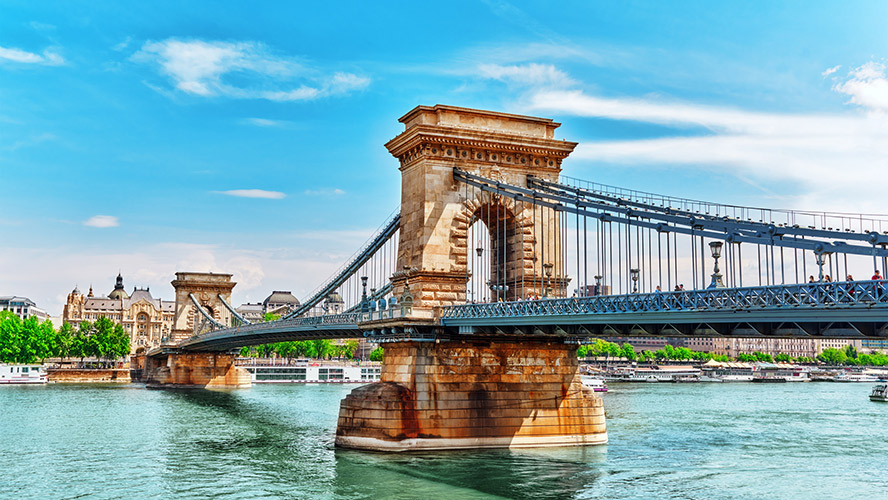
History of the Chain Bridge
These days, the stretch of the Danube that passes through the centre of Budapest has seven bridges joining both historical sides of the Hungarian capital. Of all of them, the Chain Bridge is the oldest, the first bridge built to cross the Danube in the whole of Hungary. Until then, ferries and pontoon systems were the only way to cross the river.
It was Count István Széchenyi, known as the Greatest Hungarian, during his term as Minister of Infrastructure, who spearheaded the construction of the bridge between Buda and Pest. Hammersmith Bridge, in London, served as inspiration for the project, with its suspension bridge structure formed of two towers and cables. In charge of designing the Hungarian version was the Scottish engineer Adam Clark, after whom the square on the Buda side to which the bridge is anchored is named.
Work began to build the Chain Bridge in 1839 and it was opened a decade later on 20 November 1849. This marked the beginning of a new era for development and mobility in Budapest. In 1945, however, Nazi troops destroyed the city’s five bridges as they fled during the Soviet siege of the Battle of Budapest, which devastated 80% of the city.
The bridge would be rebuilt and was reopened on 21 November 1949, 100 years and one day after its inauguration.
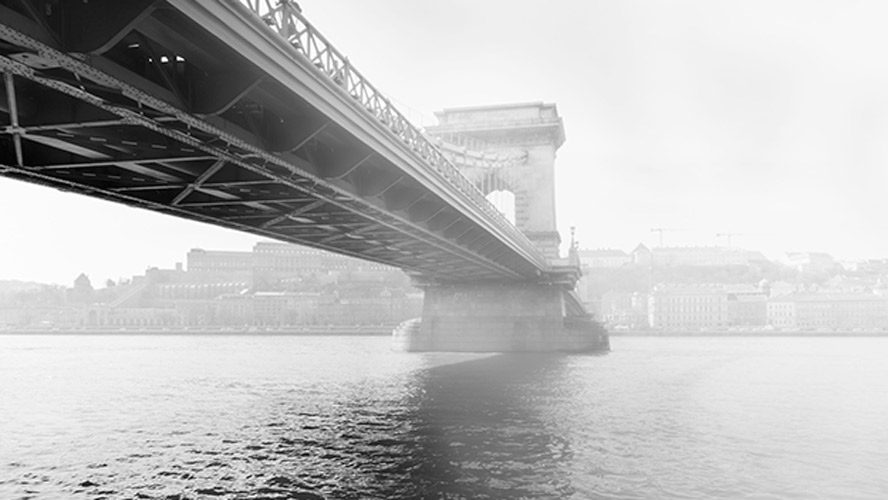
Characteristics of the Chain Bridge
The Chain Bridge is a suspension bridge; in other words, a bridge in which the deck is hung below suspension cables on vertical suspenders. It consists of two large towers or pillars on each end to which the suspension cables are attached.
In this case, however, instead of cables they are chain links, after which the bridge is named.
The Chain Bridge spans a length of 375 metres and a width of 15 metres and has a centre span of 202 metres, making it one of the longest in the world at the time of its construction.
The bridge’s structure is formed of two large stone towers and cast-iron chains and suspenders. All along the deck, the bridge is lined from one end to the other by beautiful street lamps.
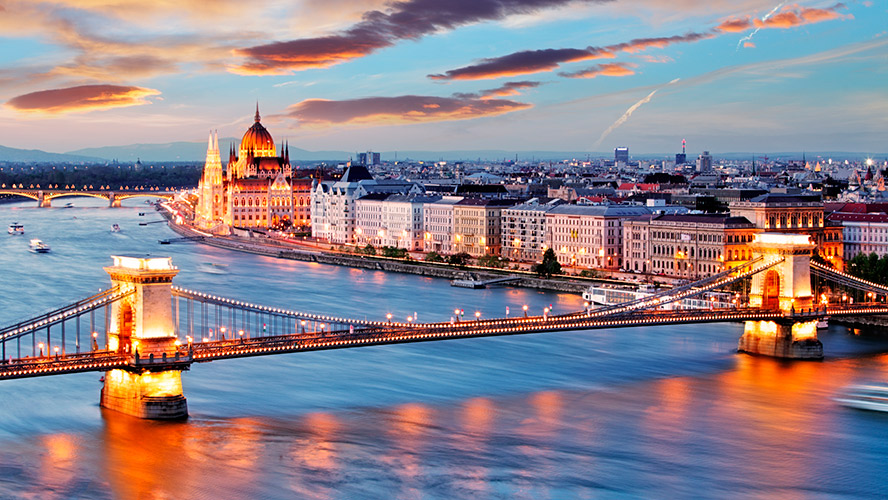
The legend of the lions
In 1853 four lion statues were installed on each end of the bridge. Legend has it that the lions are the guardians of Hungary and that they will come to life when the country is threatened.
For the time being, however, the lions are still in the same place guarding the bridge.
The bridge is yet another viewpoint over the Danube and the city. From it you can see Elisabeth Bridge, Margaret Bridge, the Parliament building and Buda Castle.
At night, the Chain Bridge is magnificently illuminated as part of the spectacle that is the city at night. We recommend climbing up Buda Hill or Fisherman’s Bastion to see it lit up.
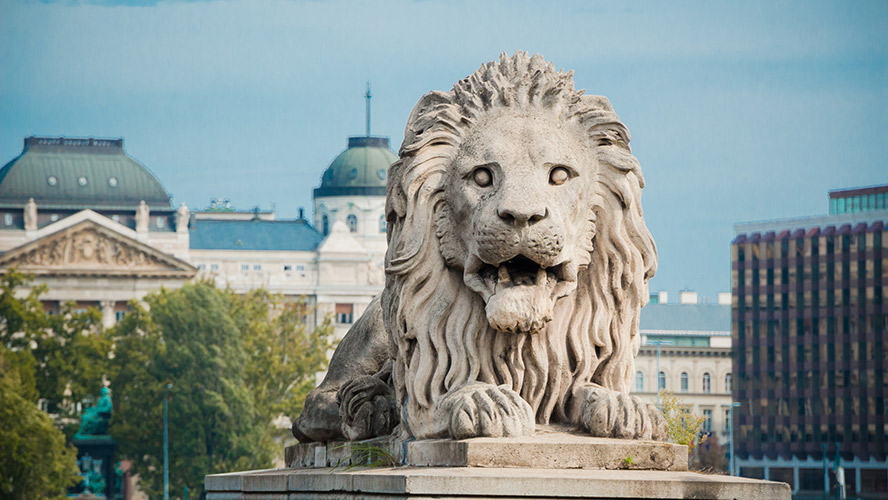
Current status: closed for remodelling work until 2023
A structure as old and as used as the Chain Bridge requires constant inspections and considerable maintenance work. The bridge is currently undergoing renovation and is closed to the public and covered in scaffolding, which means that you will not be able to enjoy it until 2023 when the work is due to be completed.
Work includes removing rust, repainting it, improving the lights, renovating the pavements and road, and restoring the bridge’s different decorative features.
Where to eat close to the Chain Bridge
Situated in the city centre, the area around the Chain Bridge offers countless eating options on both sides of the river. Here are three of our favourite recommendations:
- Retek Bisztro: on the Pest side, one of the best restaurants serving Hungarian food in the centre. The goulash, the lobster and the meatballs are musts here. Booking is advised.
- Onyx: if you fancy trying something exclusive with a Michelin star, be sure to head to Onyx. Dishes are made in its experimental workshop and are eaten on one shared table that seats 16.
- Leo Rooftop Bar: if you like the idea of dining with lovely views over the city and the river, make your way to this bar, on the Buda side of the Chain Bridge.
Where to sleep in Budapest
The Chain Bridge is in an excellent location, in the heart of Budapest, linking both halves of the city, Buda and Pest. Very close to the bridge is the Barceló Budapest, the four-star hotel belonging to Barceló Hotels in the Hungarian capital.
The modern hotel has 179 rooms offering maximum comfort so you can explore the city comfortably and on foot, a very important fact to consider. The hotel is therefore perfect for a city break in the capital.




































































